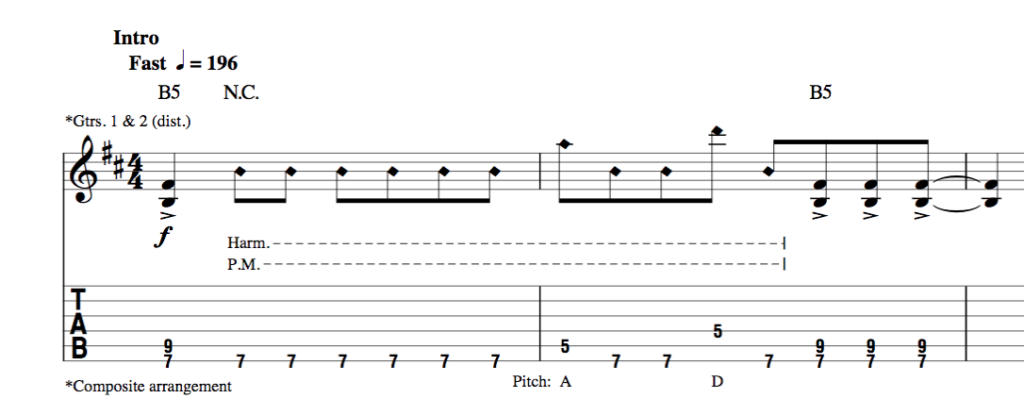Here’s Everything You Need To Know About The Bm7 Guitar Chord
Author: Matthew King

The amazing thing about playing guitar is that once you learn one shape, then you can use it in many other musical situations as well. Although the Bm7 guitar chord has the same shapes as Am7 or C#m7, it is still an entirely new sound, but one that doesn’t require a ton of time to learn again. The problem though is that you can easily get trapped by these shapes.
As we talk about the Bm7 guitar chord, it’s important to realize that you need to see it as more than shape. Instead, you should see it as a building block of music and a crucial shape to a few genres. The two genres it’s going to be seen in the most include Jazz and Pop, although it does appear in other places.
Before we get into why it’s seen so often in those genres, let’s look at it being used in a few songs that you already know….
Table of Contents
Songs That Use The Bm7 Guitar Chord
The most famous example of a song that uses the Bm7 guitar chord sound, while in the key of B Minor, is the Eagle’s classic “Hotel California.” In every minor key or major key, there will be three minor chords and all of them can create a minor 7th chord. Just keep in mind that this song’s progression is played with a capo at the 7th fret:
(Bm – F#7 – Asus2 – E7/G# – G – D – Em7 – F#7)
The next song that uses this popular chord shape is “The Scientist” by Coldplay. Take note that this isn’t using the Bm7 guitar chord, but it’s still a great example as the Dm7 uses one of the most popular forms of this chord:
(Dm7 – Bb – F – Fsus2)
A classic metal song that uses the sound of Bm7 is Megadeth’s “Tornado Of Souls.” A lot of the key riffs of the song are centered around the 7th fret, including the one you see in the image below:

Now I was able to recall one song that uses the Bm7 guitar chord explicitly. Check out the chord progression to the chorus of the Beatle’s classic “While My Guitar Gently Weeps.”
(A – C#m – F#m – C#m – Bm – Bm – E7)
All of these songs are using one of the following shapes of the minor 7th chord form:
An Important Shape For ii-V Changes
More than likely you’re just here reading this article because a song calls for this shape. Well like we said in the intro, that’s a big mistake as there is so much more to this chord’s sound. You can’t get that by just grabbing the shape and leaving!
So if you’re interested in creating funk, r&B, or jazz-type sounds, then you should take a close look at how this shape creates the common ii-V chord change. In the key of A major, Bm7 will occur at the ii, and you can see this easily when we break down the notes:
A major scale: A – B – C# – D – E – F# – G#
A chord: A – C# – E
Bm7 (ii): B – D – F#
E7 (V7): E – G# – B – D
The combination of the ii and V in a major key is the basis of so many chord progressions and riffs in the genres I just mentioned. Many chord progressions just use combinations of these two chord choices throughout the progression!
So whether you’re a songwriter or an aspiring musician, this concept is very important to know.
The Polychord Concept
This concept just means that some chords will have more than one in a single shape. For instance, Bm7 contains the chord D major, while Dm7 contains the notes of F major. Many chords will have this quality about them if they contain more than 3 notes.
Now this may be a difficult concept to use if you’re still brand new to learning any chords in general. However, if you’re a little more advanced in your journey, you may appreciate this concept as it’ll help you see so many connections to the fretboard.
Take a look at the chords of Bm7 and D major:
Except for one note, they’re basically the same chord. This is an amazing concept that you can use to vary your chord progressions and your soloing. Think about this concept in the future as you learn chords like 13s, 11s, alt chords, and diminished chords.
The Dorian Mode
If you’ve ever wanted to dive into the mysterious topic of modes, then the Dorian mode is a great intro! Let’s show the B Dorian mode alongside the other chords and scale we broke down a little bit earlier:
A major scale: A – B – C# – D – E – F# – G#
A chord: A – C# – E
Bm7 (ii): B – D – F#
E7 (V7): E – G# – B – D
B Dorian: B – C# – D – E – F# – G# – A
B Minor: B – C# – D – E – F# – G – A
Without the G#, the major 6th interval to B, you will not get the same set of chords that’ll help you create the ii-V sounds. Instead, you’ll have an Em7, which has G as its minor 3rd. There’s nothing wrong with using this at all, but the Dorian mode is the key to so many funk and R&B sounds.
The E9 chord for example, which is used quite a bit in Funk, is just an E7 with a 9th (F#) on top of it. A lot of grooves are made just by using this type of chord, and you can’t get that alone from the B minor scale.
Try to just combine some of the other chords together that are available in A major/B Dorian like C#m7, Dmaj7, and F#m7. If you’re not familiar with these chords, just download the Uberchord app and search for them from your phone. We also have several other articles that will cover chords like this one, and help you learn new songs or possibly make a few of your own.








No comments yet - be the first.